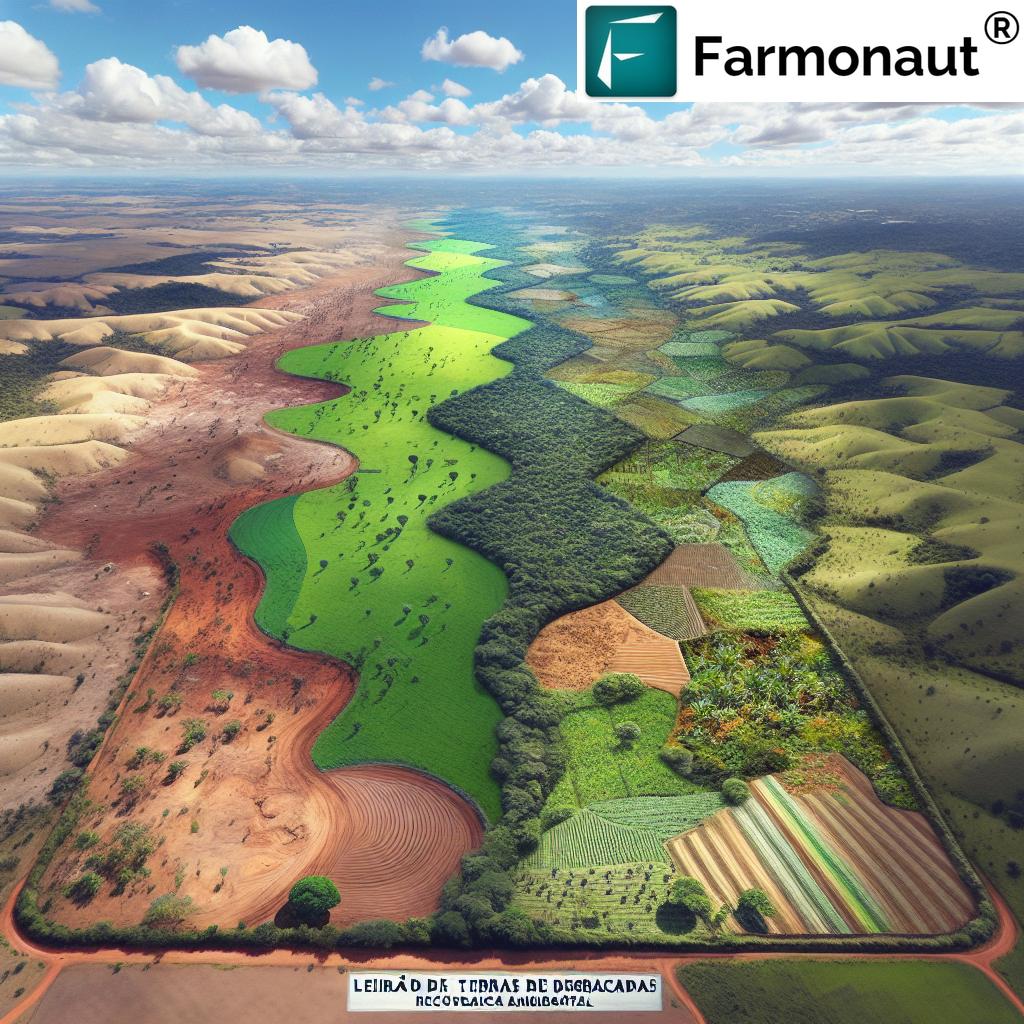7 Major Human Threats to Andean Cloud Forest Biodiversity
Introduction: The Andean Cloud Forest Overview
The Andean cloud forest region, stretching across Venezuela and neighboring Andean countries, is a breathtaking landscape of forest-clad mountains, perpetually shrouded in cloud and mist. These forest areas sit at elevations up to 10,000 feet above sea level, their steep slopes and relentless rains nurturing a wealth of unique plants and animal species. In an environment characterized by consistent air temperature ranging between 55°F and 80°F—with an average hover around 64°F—and annual rainfall of 78 to 118 inches, the Andean cloud forest is among the world’s richest ecosystems.
Yet, even in these isolated mountain regions, human development has begun to fragment and threaten the very biodiversity and carbon sink capacity these forests are famous for. During a recent event at the Norfolk Library—sponsored by Great Mountain Forest—University of Los Andes (Venezuela) scientist Carlos Garcia Nunez shared a detailed overview of this ecosystem’s challenges and how we might mitigate the impact of modern activities on this irreplaceable cloud forest biodiversity.
The Ecological Significance of Andean Cloud Forests
Why does the Andean cloud forest matter? It serves as one of Earth’s critical carbon sinks, absorbing immense amounts of CO2—up to 200 tons of carbon per hectare—and regulates both regional and global climate. The consistently wet climate, high humidity, and frequent fog promote complex ecological processes, nurturing approximately 350 known plant species, innumerable animal, bird, and insect populations, and rare species found nowhere else.
Moreover, the cloud forest system stores not only carbon but also water; its dense, moss-laden canopies capture mist and rainfall, feeding rivers that supply millions in downstream communities. Its role as a living ecosystem cannot be overstated – once lost to fragmentation, degradation, or conversion, restoring this ancient forest is, as Garcia Nunez notes, “difficult to recreate the original.”
Comparative Impact Table: 7 Human Threats To Andean Cloud Forest Biodiversity
To help us grasp the broad impact of human development on forests, let’s examine a comparative table summarizing the seven major threats, their environmental effects, and ongoing conservation efforts.
| Threat Type | Description | Estimated Area Affected (km²) | Impact on Biodiversity (species at risk) |
Impact on Carbon Sink (%) | Conservation Mitigation Efforts |
|---|---|---|---|---|---|
| Deforestation (Cattle Pasture & Agriculture) | Clearing land for grazing and crops, removing native forest cover. | 30,000 | 120+ | 15% | Protected areas, reforestation projects, sustainable land use planning |
| Infrastructure Development | Roads, settlements, and dams fragment forest areas. | 20,000 | 80+ | 8% | Wildlife corridors, landscape-level planning, habitat connectivity restoration |
| Logging | Extraction of timber, both legal and illegal, disrupting forest structure. | 10,000 | 60+ (including rare epiphytes and fauna) | 6% | Sustainable forestry, enforcement, monitoring technologies |
| Mining & Quarrying | Mineral and resource extraction, contaminating soils and water. | 7,500 | 35+ | 4% | Regulation, exclusion zones, impact assessment protocols |
| Fires (Natural & Human-Induced) | Burning vegetation for land clearing or due to droughts and accidents. | 5,000 | 25+ | 3% | Firebreaks, remote sensing, community fire management training |
| Introduction of Invasive Species | Non-native plants and animals outcompete local species, altering ecosystems. | 4,000 | 20+ | 2% | Biosecurity, eradication programs, restoration of native species |
| Climate Change | Shifts in temperature and rainfall; exacerbates other threats. | Potentially all | All species affected | Variable, up to 20% | Emissions reduction, carbon monitoring, adaptive management |
1. Deforestation from Cattle Pasture and Agriculture Expansion
Our first major threat is the direct conversion of cloud forests into cattle pasture and cropland. Throughout the Andean region—including Venezuela’s mountains—people have cleared land for generations. Recent decades, however, have seen these activities expand rapidly, driven by both local subsistence needs and global markets.
Deforestation involves the felling of mature cloud forests, burning or bulldozing the vegetation, and converting complex habitats into monotonous grasslands or monocultures. This process not only devastates the intricate web of relationships among plants and animals but also triggers soil erosion, increases sedimentation in rivers, and alters the local and regional climate.
Impact on Biodiversity
- Significant reduction in biodiversity, with endemic and highly specialized mountain species most at risk.
- Loss of habitat for iconic Andean species (e.g., spectacled bear, Andean cock-of-the-rock).
- Decrease in the resilience and genetic diversity of communities of plants.
Effects on Forest Carbon Sink Capacity
- Loss of dense forest cover greatly reduces the ecosystem’s ability to absorb carbon from the atmosphere.
- Soil disturbance from agriculture and pasture releases stored carbon into the air, contributing to greenhouse gas emissions.
For real-time support in minimizing the environmental impact of agriculture, farmers and organizations can utilize Farmonaut’s Carbon Footprinting module. This tool tracks farm-level emissions and helps in strategizing to reduce the impact on the cloud forest carbon sink.
2. Infrastructure Development and Forest Fragmentation
Another key threat is the relentless march of infrastructure—roads, settlements, hydroelectric dams, and utility lines—that physically fragments forest areas into isolated clumps. In regions like those around Norfolk and throughout the Venezuelan and Colombian Andes, the signature “sea of trees” is increasingly punctuated by developed land, forming islands of forested habitat.
Such fragmentation breaks continuous biodiverse landscapes into fragments that are often too small to sustain viable plant and animal populations. The edge effects increase vulnerability to invasive species, drying winds, and further human encroachment. Studies, including those shared by Garcia Nunez at the Norfolk Library, estimate biodiversity loss in fragmented forest areas ranging from 0.5% to 2.4% annually.
The Rise of Fragmented Forest Areas
- Physical barriers impede movement of birds, mammals, pollinators, and seed dispersers.
- Loss of genetic connectivity; species become increasingly isolated.
- Microclimatic changes on “edges” reduce ideal habitats for cloud forest species.
Carbon Sink Disruption
- Fragmentation “shrinks” the carbon sink by reducing core forest habitat, which is most efficient at carbon absorption.
- Edge areas and small fragments absorb less carbon compared to intact forests, hampering mitigation of regional and global warming.
For a mountain ecosystem conservation perspective, Farmonaut’s Product Traceability enhances transparent tracking for forest-derived and mountain-grown products. This supports legal compliance and reinforces sustainable brands globally.
3. Unsustainable Logging and Extraction
The effects of logging on biodiversity are severe in the Andean cloud forest. While selective logging may appear less damaging on the surface, illegal or poorly regulated timber extraction is among the fastest ways to degrade these forests. Each felled tree not only removes a significant carbon store but opens up the forest for further colonization, more roads, and eventual agricultural conversion.
- Loss of rare tree species (epiphytes and ancient hardwoods) imperils canopy specialists and many endemic species.
- Alters microclimates by allowing extra sunlight and wind penetration—anathema to the high humidity and constant fog typical of the cloud forest environment.
- Logging operations lead to soil compaction, erosion on steep slopes, and contamination of waterways.
Smart monitoring tools like Farmonaut’s Agro Admin App and AI-based Crop, Plantation & Forest Advisory offer scalable options for authorities and conservation groups seeking to curb illegal logging and promote landscape-level restoration of forest habitats.
4. Mining and Quarrying Activities
Mining—legal and illegal—removes swathes of mountain forest, contaminates soils, and sends sediment plumes down river systems. Gold and mineral mining in the Andean region not only ruins surface habitats but introduces heavy metals into cloud forests’ unique hydrology.
- Mining sites are environmental “dead zones,” incapable of sustaining most native cloud forest biodiversity.
- Acid mine drainage and chemical pollution endanger nearby population communities (plant, animal, and human alike).
Strict environmental impact assessments and exclusion zones are vital—but equally important is continuous, data-driven surveillance. API access to satellite and ground data, like that available from Farmonaut API and API Developer Docs, provides critical operational insights for environmental agencies and researchers alike.
5. Fire and Prescribed Burning
While naturally rare, fires have become an increasing hazard due to forest conversion and climate variability. Many cloud forest species have little or no resilience to fire; a single blaze can wipe out ancient communities. Furthermore, human-induced controlled burns for agriculture or pastureland often escape control on steep mountainous slopes.
- Fires destroy permanent seed banks and kill soil microbes, setting back regeneration for decades.
- Burned areas lose their capacity to retain moisture, making reforestation and natural succession more difficult.
Satellite-based remote sensing, such as tools offered by Farmonaut’s large scale farm management solutions, is indispensable in early detection and damage assessment of fires in cloud forest regions.
6. Introduction of Invasive Species
The arrival of non-native plants or animals, either as deliberate introductions or accidental stowaways, fundamentally alters the delicate ecosystem balance in cloud forests. These invasive species often outcompete native flora and fauna, disrupting mutualisms, pollination, and food webs maintained over millennia.
- Examples include grasses suited for cattle grazing overtaking open forest margins or aggressive weedy climbers swamping native vegetation.
- Introduced disease vectors or feral animals may prey on or out-reproduce native populations.
Integrated monitoring and intervention are key to preventing outbreaks and supporting ongoing restoration of forest habitats.
7. Climate Change Influences and Feedbacks
Though often amplified by the previous six threats, climate change itself poses a profound long-term danger to the Andean cloud forest’s structure and function:
- Rising air temperatures force cloud formation—and therefore the entire climate regime—higher upslope, leaving lower-elevation forests drier and less suitable.
- Changes in wet season rainfall in Andean forests can trigger droughts or intensify floods, challenging the resilience of plants and fauna.
- Feedbacks between climate, disturbance (e.g., fires), and development create chronic instability—furthering loss of cloud forest biodiversity and carbon sink functionality.
Climate monitoring technologies and adaptive, landscape-focused management—drawing on satellite data and machine learning for predictive analysis—are foundational to successful interdisciplinary approaches to ecosystem management.
“Andean cloud forests store up to 200 tons of carbon per hectare, but fragmentation reduces their carbon sink capacity.”
Innovative Technology and Data-Driven Approaches for Biodiversity Conservation
Confronting such complex and multi-layered threats to the Andean cloud forest requires integrated, technology-driven, and interdisciplinary solutions. Farmonaut, for instance, makes precision agriculture and sustainable land management possible at scale using remote sensing, AI, and blockchain-based verification. Let’s explore how these can help:
Satellite-Based Crop Health Monitoring
- Enables real-time tracking of forest cover, crop expansion, and restoration success, with multispectral imagery revealing even subtle changes in vegetation health (NDVI), soil moisture, and microclimatic shifts.
- Helps in mapping fragmented forest areas and prioritizing sites for reforestation or legal protection.
We can leverage these tools to enhance the effectiveness and transparency of restoration of forest habitats!
AI-Based Agronomic Advisory: Jeevn
- Farmonaut’s AI-based advisory tailors crop management strategies to local microclimates, reducing the need for conversion or overuse of developed areas.
- Promotes more sustainable yields outside of core cloud forests, reducing landscape pressure and helping sustain existing biodiversity.
Blockchain-Based Traceability
- Enables transparent documentation of agricultural and forest products—helping buyers, regulators, and scientists trace the impact of human development on forests back to its source.
Resource & Fleet Management
- Efficiently organizes agricultural operations to reduce redundant movement and minimize edge incursion into cloud forests.
- Smart logistics decrease pressure on core high-biodiversity areas and optimize restoration operations.
Carbon Footprinting and Monitoring
- Quantifies and displays the emissions profile of individual farms, forest patches, or even entire mountain ecosystem units in real time.
- Empowers businesses, governments, and NGOs to make data-supported conservation investments in mountain ecosystem conservation.
Explore the Farmonaut Carbon Footprinting module to learn more about supporting regional sustainability objectives using accurate satellite-backed data.
Farmonaut Tools Supporting Sustainable Mountain Ecosystem Conservation
| Farmonaut Tool | Functionality | Conservation Use Case | Benefit to Andean Cloud Forests |
|---|---|---|---|
| Satellite-Based Crop Monitoring | Real-time NDVI, biomass, and soil moisture analytics | Early detection of illegal clearing, restoration tracking | Prevents conversion, supports habitat mapping |
| AI Crop Advisory (Jeevn) | Personalized crop, irrigation, and input recommendations | Sustainable yields in non-core forests | Reduces pressure on cloud forest boundaries |
| Blockchain Traceability | Secure ledger for crop origin and movement | Transparent supply chain audit for certified products | Discourages illegal logging/mining, rewards ethical producers |
| Fleet & Resource Management | Optimize transport and field operations | Efficient restoration/reforestation missions | Minimizes resource waste, speeds up conservation logistics |
| Carbon Footprinting | Real-time greenhouse gas monitoring and reporting | Tracking emissions per hectare, climate policy support | Supports net carbon sink restoration and climate-friendly planning |
Conclusion: The Path Forward for Andean Cloud Forests
The Andean cloud forest—from the high slopes of Venezuela near sea level to the valleys above Norfolk—is a miracle of nature that cannot be replaced once lost. The mounting pressure from expansion of pasture, infrastructure, logging, resource extraction, fires, invasive species, and climate change is rapidly eroding this global biodiversity treasure and its essential role as a forest carbon sink.
Our future lies in embracing a truly interdisciplinary approach—across landscape, ecosystem, communities (of plants and animals), down to the population and individual plants—to both conserve what is left and restore what we have lost. The use of **advanced, affordable technologies** like those provided by Farmonaut empower farmers, scientists, and policymakers to **monitor, manage, and revive** our mountain ecosystems at every organizational level.
Let us all—farmers, scientists, land managers, and global citizens—support efforts rooted in science, technology, and respect for the forest. In doing so, we can ensure that the fog-shrouded kingdoms of Andean mountain forests remain vibrant, connected, and resilient for centuries to come.
FAQ: Andean Cloud Forests & Conservation
What is the primary function of the Andean cloud forest?
The Andean cloud forest acts as both a biodiversity reservoir, supporting unique flora and fauna, and as a vital carbon sink, helping stabilize regional and global climate.
Why are fragmented forest areas less effective at sustaining biodiversity?
Fragmented forest areas are isolated clumps of habitat that are too small to sustain viable populations, lack genetic connectivity, and are more exposed to human impacts, leading to accelerated biodiversity loss.
How does human development impact ecosystem services in the Andean cloud forest?
Development fragments and degrades forest areas, reducing their capacity to absorb carbon, regulate water flows, and support specialized species. Over time, this leads to a decline in ecosystem services both locally and far beyond.
What are the main activities that encroach on the cloud forest?
The key threats are clearing of forest for cattle pasture and agriculture, infrastructure development (roads, dams, settlements), and unsustainable logging operations.
How can technology contribute to the restoration of forest habitats?
Technologies like satellite-based remote sensing, AI-driven farm advice, blockchain traceability, and carbon foot-printing are invaluable for **real-time monitoring**, transparent management, and targeted restoration efforts in cloud forest landscapes.
Where can I learn more about practical precision agriculture tools?
Visit Farmonaut’s platform for intuitive, affordable solutions on Android, iOS, or web.
For developers and organizations interested in data integration, access the Farmonaut API and API Developer Docs.
Explore crop loan and insurance services for verified financing opportunities.
Explore more about how precision technology, sustainable land management, and informed science can safeguard the ancient Andean cloud forest for future generations.
© 2024 Farmonaut | Sustainability & Environment
















